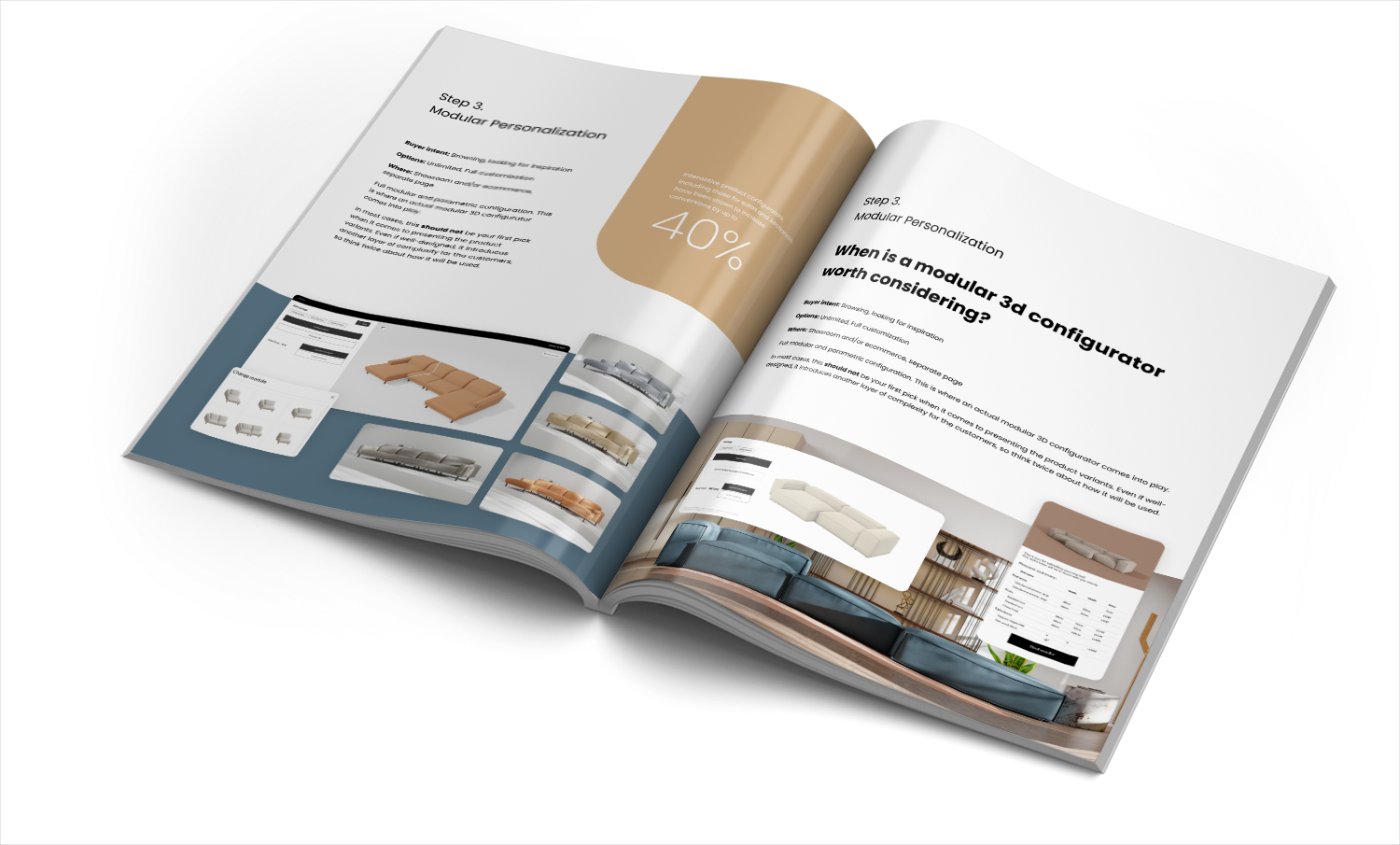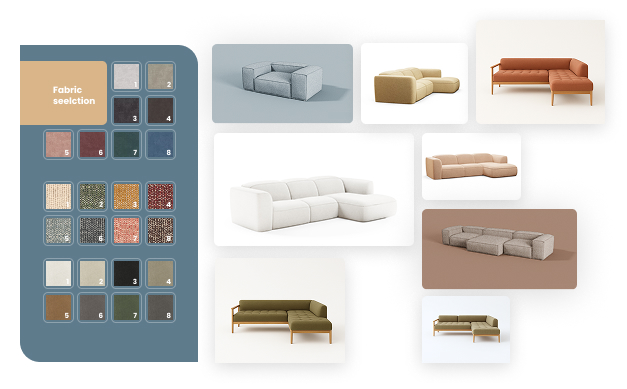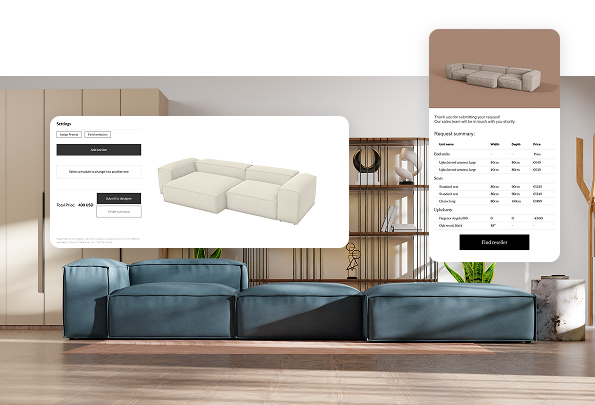The Ultimate 2025 Sofa Configuration Guide
Get your free copy todayy!

Most furniture brands think adding a 3D sofa configurator to their website will magically boost conversions. But if you’re seeing little change in engagement, sales, or lead quality – it’s not the idea that failed. It’s the execution.
Because here’s the hard truth: most configurators are built to “look good” in a marketing meeting, not to actually move products like your 72-inch sofa or customizable 3-piece set.
Let’s break down where most companies go wrong – and what your sofa configurator should really be doing if you want it to drive sales.
When done right, a sofa configurator is a tool that lets customers build, price, and visualize their sofa in real time, across all variants, fabrics, and finishes. While many configurators use 3D views, others rely on pre-rendered images or 360° spins. The format is secondary. The goal is clear: help the user select the right piece, get an instant quote, and place an order – without confusion or choice paralysis.
A high-end configurator will allow users to see the sofa in both 3D and in the form of pre-rendered images (both overall shots and closeups) that show all the fabric details. It will also include an AR preview. But what’s most important – it will be integrated with the e-commerce software and CRM/ERP systems.
Think of it like a digital salesperson that never sleeps.
It helps users:
If yours doesn’t do that, it’s not a configurator. It’s a liability.

In 2025, selling customized sofas is no longer only about customization. It’s also about clarity.
Customers are often overwhelmed with countless options:
Being able to present all of the variants you offer is what customers expect, but it’s not enough anymore. Buyers expect clarity, control, and confidence.
That’s why Ar-range introduced a 3-step personalization process for sofa/furniture brands, based on the current buyer's intent (derived from the buyer’s journey).

Based on the points above, Ar-range’s strategy team observed a common mistake among sofa brands when it comes to building their configuration process: they build a beautiful 3D experience, but it does nothing to accelerate the sale.
- Instead of bringing clarity, it confuses the customers.
- It’s the only way for the customers to review the upholstery options (no in-store product variants).
- It doesn’t include price logic.
- It’s not connected to the ERP system. If it was, you could use the data from the configurator to optimize the manufacturing process (for instance by introducing nesting software).
- It’s not integrated with CRM.
The last one – lack of CRM connectivity – is a huge mistake. A 3D configurator can become your main lead magnet. Even if a customer doesn’t decide to buy instantly, they have already invested some time and will most likely be willing to leave their contact details if you promise something in return.
A good example is a high-quality render prepared based on their configuration. The sofa configuration system by Ar-range offers that feature out of the box. It can automatically create a photorealistic render of any sofa variant the customer comes up with. Needless to say, this makes Ar-range the best sofa configurator on the market.

On top of that, there are some common mistakes on the e-commerce level as well. As far as those could be skipped just a few years ago, now in 2025, with clarity and AI visual search becoming a megatrend, they need to be addressed right here and now.
A comprehensive guide about sofa configurators, focusing on how they can enhance customer experience, drive sales, and improve personalization in 2025. It explains the functionality of configurators, common mistakes brands make, and provides actionable checklists for creating an effective personalization system. Key points include:
- Purpose of Sofa Configurators: Helping customers visualize, customize, and purchase sofas effortlessly.
- Levels of Personalization: Basic variant selection, extended fabric options, and full modular customization.
- Common Mistakes: Poor UX, lack of integrations, and ineffective summaries.
- Trends: AI-guided search and conversational browsing are becoming essential.
BONUS:
- Actionable Checklists: For e-commerce UX, 3D configurator functionality, and operational support.
If you're in the furniture industry or considering adding a configurator to your website, this guide is must-read. It provides practical insights and strategies to improve customer engagement, personalization, and sales conversions.
